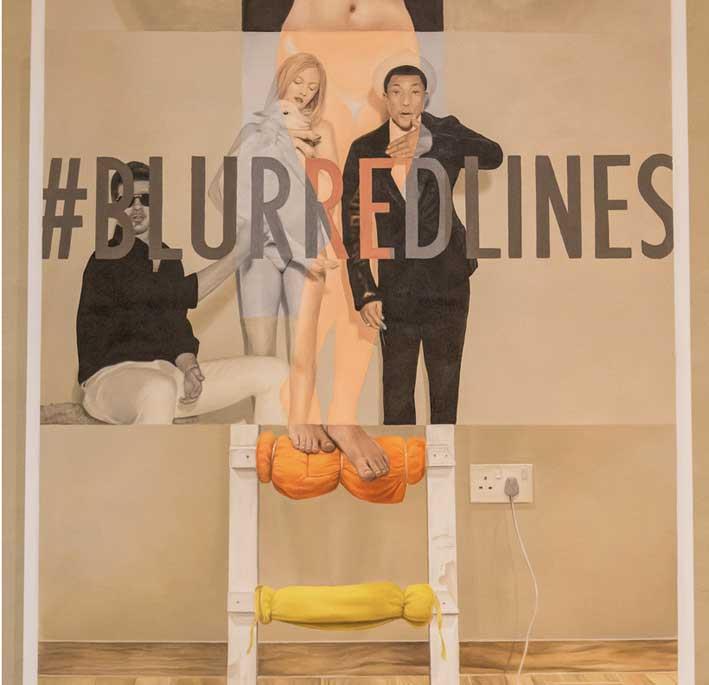The APS Mdina Cathedral Contemporary Art Biennale, opening from 13th March to 18th April in 2020, is once again at the forefront in the discussion on the dialogue between spirituality and the other. Held within the medieval-cum-baroque precincts of Malta's oldest capital city, the next edition's theme will focus on the dialogue between spirituality, art and the environment. The exhibition is thus entitled 'Regaining a Paradise Lost - The Role of the Arts'.
The APS Mdina Cathedral Contemporary Art Biennale, now in its third edition under the artistic directorship of Professor Giuseppe Schembri Bonaci, endeavours to marry contemporary art and curatorship with the problems and realities of our present and future. The Mdina Biennale, in its early days, started as an exhibition focused solely on Catholic and religious art. The immensity of the contemporary world was somewhat ignored in favour for the personalised taste of a local few. The first APS Mdina Cathedral Contemporary Art Biennale in 2015-16 helped awaken the need for a new contemporary space to welcome both local and international artists. It is this duality, of both idea and space, which allows the APS Mdina Biennale to take ownership of a new style of curatorship, dialogue and content. In many aspects, a new type of art language and commemoration is needed to help propel the local art scene to new frontiers. The need for individuals trained in the proper manifestation of art and its practices are the key in finding this new image that will aide in placing Malta within global art atlas. The past has seen great strides in the acceptance of contemporary art, with several spaces or exhibitions being set up, and with Malta's recent entry in the Venice Biennale after a long hiatus. Nonetheless, it is this aspect of one-offs that brings peril to the contemporary scene in Malta. The need for continuity, remembrance and vitalisation is at the core of the APS Mdina Biennale.
The main focus of the APS Mdina Biennale is, barring the art, Mdina itself. The heart of the exhibition is the Cathedral Museum, a magnificent repository of paintings, sculptures, drawings and artefacts. The extant collection derives from the 1897 collection which was housed within the adjacent halls to the Cathedral before it was moved to the seminary in 1969, where the collection still remains to this date. The dual relationship of the museum as an art space as well as a functioning building comes to the fore within the layout. Examples of its past function as a prelate seminary exist throughout the building, allowing for an interesting dialogue to occur between the orthodox remits of Catholic art and contemporary art.
Building upon the previous editions' success, the theme reflects the ongoing question proposed by the APS Mdina Biennale - the quest for understanding spirituality, and how it effects mankind's perception of the world. This year's focus is placed on the relationship between mankind and his environment. The exact title focuses on the endeavour to regain what was once perfection. A play on words in the exhibition's title reflects two of John Milton's (1608-1674) epic poems: Paradise Lost, first published in 1667, and Paradise Regained, first published in 1671.

Darren Tanti, Blurred Lines, 2017. Photo: Elisa von Brockdorff
The first, Paradise Lost, is a recounting of the Biblical story the Fall of Man and their banishment from the Garden of Eden. In many ways, the banishment of Adam and Eve reflects the similar suffering and longing expressed by millions worldwide at the destruction of our natural habitat. Like Adam and Eve, the punishment is of our own doing, and the consequences are long lasting in effect. In light of the rampant construction, destruction of natural habitats and use of hazardous materials, the future of humankind is tied with the condition of our present Earth. The overzealous use of certain materials, the desensitisation of our collective attention-span and the greediness of governments, oligarchs and companies is a self-inflicting wound. The prosperous, healthy and rewarding future, promised to our future generations, is becoming undone. In Milton's own words published in Paradise Lost, the purpose of this poem was to 'justify the ways of God to Men'. In light of this comment, one can describe the sensuality of commodity and greed - plastics, oils, rampant construction - as the modern-day serpent, fooling Adam and Eve into succumbing into sin.
Art, as always, should be a mirror of society. Art should reflect the beauties, horrors and injustices of the world and be a platform through which discussion and compromise can be achieved. In many ways, much needs to be regained, as much has been lost. The ongoing battle for the safeguarding of our natural and historic environment seems to be a never-ending fight against pure greed and short sightedness. The rest of the title includes the words 'regaining' and 'the role of the arts'. 'Regaining' adds a most positive spin to the title, allowing hope and aspirations for a better future. In many ways, Schembri Bonaci is placing the act of saving and 'regaining' in the hands of the artist.
The 2020 APS Mdina Cathedral Contemporary Art Biennale is platform from which a plenitude of ideas and cross-national and international dialogues evolve. As new challenges, oppositions, and tragedies arise, art should be both a balm as well as a means of augury. The importance of this exhibition lies within the emphasis placed on the role of the artist as society's antennae. The 2020 Mdina Biennale will carve out a small slice of paradise, regained from the clutches of greed, and offered to us as a means forward.